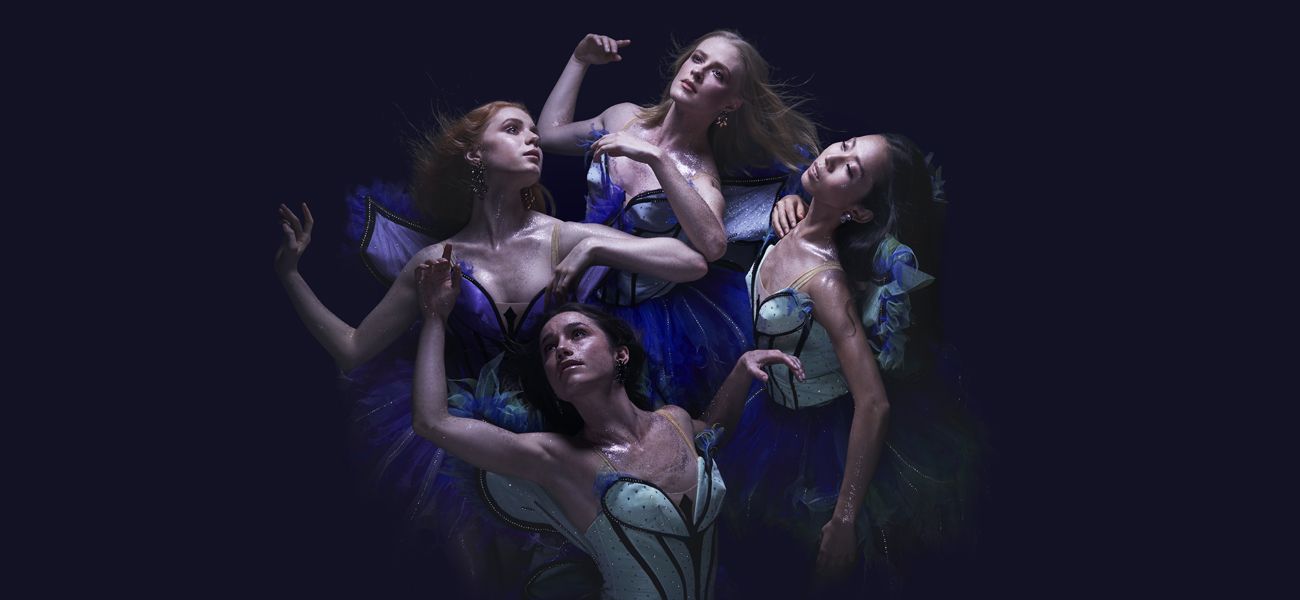The History —
A Midsummer Night’s Dream is surely one of Shakespeare’s best-known and best-loved plays, an inspiration for many artistic endeavours, from instrumental music and songs to opera, painting, film and of course ballet. Many of the characters are instantly recognisable – Titania, Oberon, Puck, Bottom with his ass’s head – and, as with all of Shakespeare’s works, the play is a source of phrases that have entered into the vernacular: ‘The course of true love never did run smooth’, ‘Give us your hands if we be friends’ ‘Love looks not with the eyes, but with the mind’.
The first recorded performance of the play took place at the court of King James I in London, on New Year’s Day 1605. It was most likely written and first performed during the 1590s, the same period as Romeo and Juliet, Love’s Labour’s Lost and The Merchant of Venice: an outbreak of plague had closed the theatres in 1594-5 and Shakespeare had time to devote to writing. There is no evidence to suggest that it was commissioned to mark a particular occasion such as an aristocratic wedding.
Shakespeare drew on diverse sources for his play. Titania, daughter of Titan, appears in Ovid’s Metamorphoses, as do the tale of Pyramus and Thisbe and the transformation of King Midas into an ass. Shakespeare would have studied the Metamorphoses in Latin as a grammar school boy; an English translation was published in 1567. He would also have known the bawdy Golden Ass by Apuleius, narrated by a man transformed into an ass. Titania was also sometimes used as an alternative name for the goddess Diana, often identified with Elizabeth I, and the Fairy King and Queen were a popular subject in Elizabethan poetry and prose. Mischievous fairies like Puck were common in English folklore.
While A Midsummer Night’s Dream was popular in Shakespeare’s lifetime and during the early part of the Jacobean period, with the exception of Henry Purcell’s semi-opera The Fairy Queen (1692), which drew heavily on the scenario and Shakespeare’s text, it fell out of favour during the 17th century. Although adaptations continued to appear, a complete production was not staged again in England until 1840. Mendelssohn’s music was integral to this production, as were ballet sequences, staged at Covent Garden by the singer and actress Lucia Vestris. She herself performed the role of Oberon, thereby starting a theatrical tradition that continued in England until the First World War.
The play, appealing to the Victorians’ love of fantasy and grand spectacle, became popular again, and until well into the 20th century, a new Midsummer Night’s Dream was an excuse for galaxies of ballerina fairies and extravagant forest settings. It even features in Noel Streatfeild’s much-loved Ballet Shoes (1936), when the three Fossil sisters take starring roles in just such a production. It was not until 1970, and Peter Brook’s landmark version for the RSC, that A Midsummer Night’s Dream truly broke free of the trappings of Victoriana to focus on Shakespeare’s characters and their relationships. Since then, it has been the vehicle for a wide range of stagings and styles, with Shakespeare’s expertly plotted story seemingly able to shine in any setting.
Dreams and Fairies
Mendelssohn’s music provided inspiration for two of the 20th century’s greatest choreographers. George Balanchine created a full-length Midsummer Night’s Dream for New York City Ballet in 1962: like Liam Scarlett, choosing to augment the score with additional music by Mendelssohn. Balanchine’s work is for 81 dancers, with the first act containing the action as it unfolds in Shakespeare’s play (although he dispenses with the Pyramus and Thisbe play-within-a-play) and the second an extended wedding celebration.
Frederick Ashton’s The Dream, created for The Royal Ballet in 1964, is a one act work commissioned to mark the 400th anniversary of Shakespeare’s birth. Ashton elected to use only Mendelssohn’s score, stripping down the action to focus on Shakespeare’s inner acts. Ashton described the Dream as the ‘most balletic’ of Shakespeare’s plays, and Mendelssohn’s music, dating as it does from the era of Romantic ballet – the composer was known to be an admirer of the great Marie Taglioni – provided the impetus to create a Romantic homage, with Victorian fairies and lovers in frock coats and crinolines. The career-defining roles of Oberon and Titania were created on the young Anthony Dowell and Antoinette Sibley.
Other notable choreographers to be inspired by A Midsummer Night’s Dream include John Neumeier (Hamburg Ballet), Heinz Spoerli (Zurich Ballet) and David Nixon (Northern Ballet). The RNZB has featured two versions over its 62 year history: the late Harry Haythorne’s Titania Wakes, a divertissement created for a Royal Gala in 1981, and a one act version by Ashley Killar, with music performed by the New Zealand String Quartet and Saxcess, produced in 1995.
